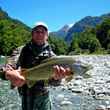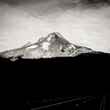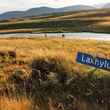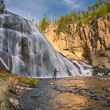This first week of winter offers hope here on the slopes of the Caribous. The shortest day of the year is behind us and between now and late June, we’re graced with a little more light each day.
We’re not necessarily graced with more sun. Winter is cold and gray … almost sepia. The sun doesn’t really shame the remnants of the Northwest cloud cover until April, sometimes May. The calendar may claim differently, but winter is our longest season.
At first, it’s just an illusion, really. An emotional salve that really doesn’t change much. The sun sets over the Snake River Plain a minute later than it did the day before. Then another minute later. And another. Soon, the sun starts to rise earlier, too.
By the end of January, the day is a full half-hour longer. It may not seem like much, but anyone with Seasonal Affective Disorder would tell you differently. That half hour … that’s the hope.
As oppressive as winter can feel, I’ve begun to look at it with just a hint of optimism. Others who love the cold season for its skiing and such might look at winter as best time of year. I’ll likely never look eagerly toward winter, but I have started looking at winter as the necessary price for a glorious Idaho summer.
Yes, winter’s snow feeds Idaho’s rivers, which, in summer, offer some of the best fly fishing for trout in the West. But it’s more than that. That’s the obvious benefit of cold and snow. I think it goes beyond that, and not just here in Idaho, but anywhere winter grips the land and the spirits of the people who look to trout water for emotional respite and recharge.
We pay for summer—those fleeting warm months where walks through mountain meadows along cold, clear trout waters bring us so much overt joy—with stark, naked trees, slate-gray skies and months of bitter cold. Winter is our emotional bank deposit that helps fund summer.
Or maybe it’s the other way around. We build up all the spiritual energy over the summer just so we can survive winter without a visit to the shrink.
Either way, one plays off the other. Without one, the other is hollow. I survive winter’s necessary evil these days. That’s the right word, too … survive. I endure the cold, the snow … the dormant landscape. I suffer below-zero nights and the painful sound of of a snow-shovel blade grating on concrete as I clear the walks, only to await the next spirit-diminishing blanket of snow.
I tolerate the holidays and the chipper folks who crave falling snow and look to the high country, locked in a deep freeze and ask with unblemished enthusiasm, “Isn’t it beautiful?”
One would have to own an empty, dusty soul to gaze upon the Tetons, for instance, and honestly answer, “No” to that question. Winter can be beautiful, at least to the eye. But I look upon the feet of powder high in the mountains and wonder oh, so desperately, “Will this ever end? Will I be able to muster what it takes to survive this season of despair?”
No, I’m not being dramatic, either. This year, “winter” started in early October, as the thermometer dipped below zero while there were still leaves on the trees. Then it snowed—we got a good dump right around Thanksgiving, which isn’t unusual, but it’s also a bit early for such natural shenanigans. And, no, it’s not a particularly brutal winter, at least not yet. But every winter nestled up against the Rockies can feel as if it lasts half the year. And, honestly, sometimes it does.
Certainly, I could find ways to escape, and often, I do. I spent the first two weeks of December in Patagonia, enjoying the last few days of the Andean spring. It was heavenly to wade wet in Argentinian streams and to slather on the sunscreen and sweat through a Buff. But I had to come home. I stepped out of the arrivals door into the Idaho winter and my nostrils froze shut.
My deep crimson sunburn is now a fading tan. Memories of hungry trout dancing over Patagonian freestoners are blurry. The visions of condors cruising thermals don’t feel real anymore.
But the cold does. The gray skies … they’re real enough. The crunchy snow from the storms that rolled through while I was gratefully in another hemisphere … that’s real. That’s the thing for those of who thrive under sunny mountain skies. Summer is so fleeting that it often doesn’t feel like it’s ever really arrived. But winter … that’s a reality we suffer through. Such is life for those of us so deeply impacted by the seasons.
But that extra minute of daylight. The memories of summers past, where winter snows turn into wild trout water high up in the willows and the pines. It won’t last forever, even if it feels like it does.
There’s still hope.

































Comments